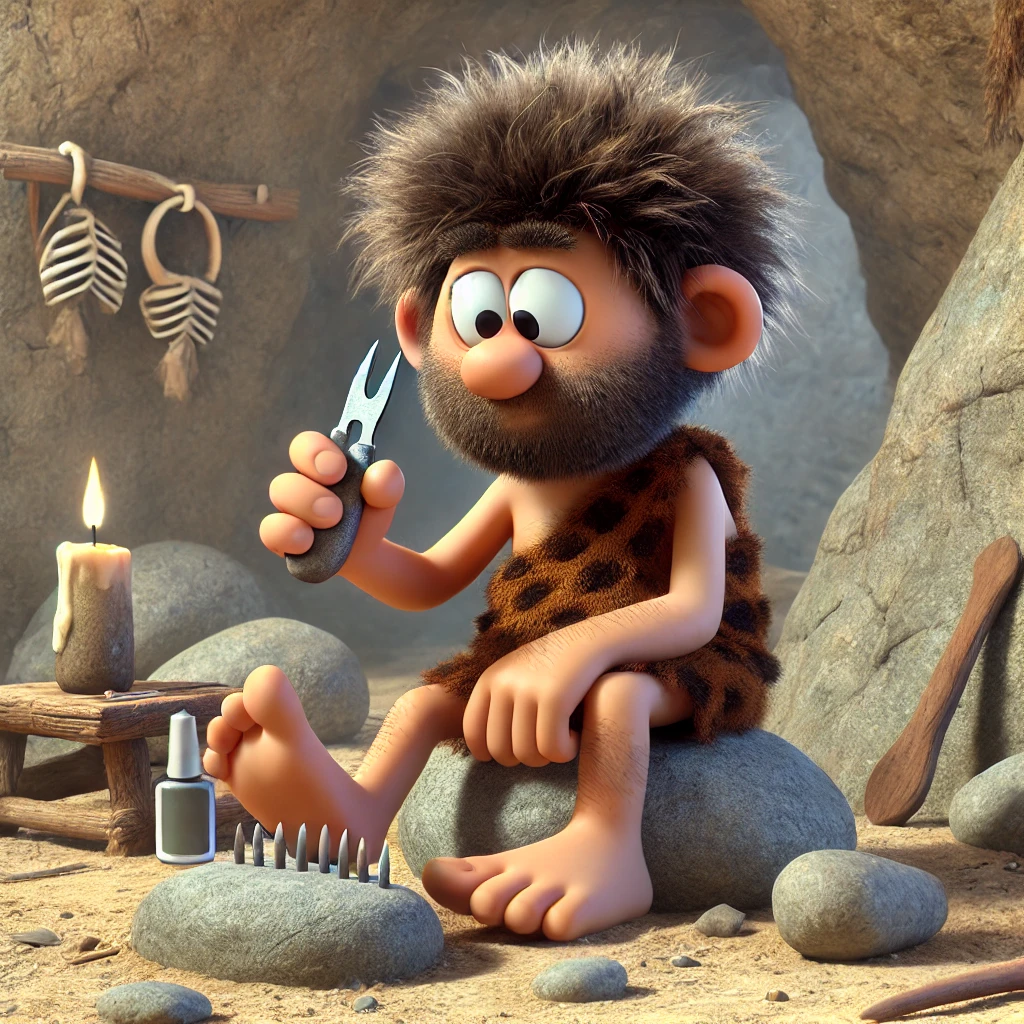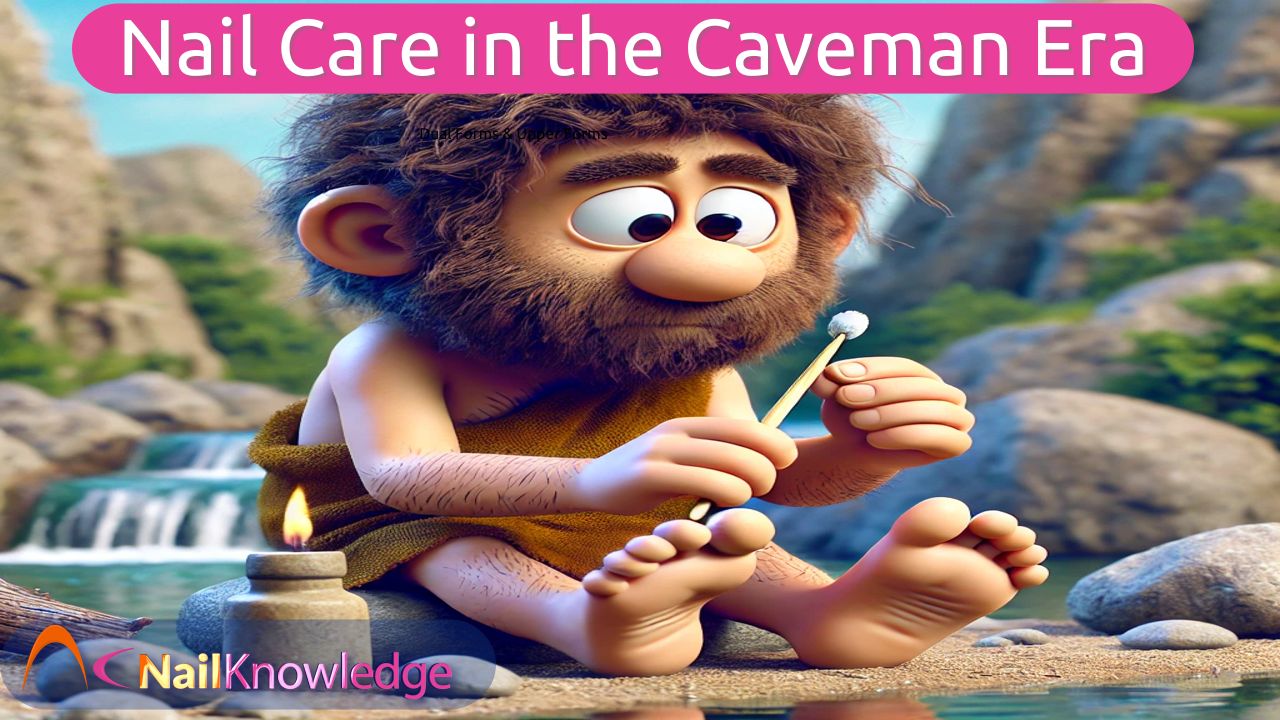Picture this: a rugged landscape, woolly mammoths roaming in the distance, and our ancestors huddled around a fire, scratching their heads—or rather, their nails. They didn’t have nail clippers, files, or polish, but their nails kept growing all the same. So, what did a caveman do about his claws? It’s fun to imagine, isn’t it? Let’s dive into this prehistoric “nail care routine” with a little humor and a lot of imagination.
The Prehistoric ‘Tool Kit’ for Nail Maintenance
Agora, sem metal ou aparelhos sofisticados, os homens das cavernas precisavam criativo. Think of a caveman—let’s call him Og—who picks up a sharp rock to trim down those talons. Or maybe he found a rough bone discarded from last night’s hunt, just right for grinding down a stubborn hangnail. Stones, sticks, bones—whatever he could get his hands on, Og was probably making do with what nature provided. And who knows, maybe the discovery of sharp stones for nails was the Stone Age’s first “aha” moment in self-care.
Moda ou função? O papel das unhas na sociedade do homem das cavernas
Naquela época, as unhas eram mais do que apenas uma preocupação com a aparência; elas eram ferramentas por si só. Unhas curtas e lisas poderiam indicar que alguém era adepto da escultura ou da caça. Unhas crescidas e irregulares? Talvez fosse sinal de um habitante de caverna menos ativo ou de alguém que ficava mais perto do acampamento. As unhas podem ter sido um símbolo de status? It’s a stretch, but fun to imagine—a “neat” nail might mean a skilled worker, while gnarly nails were just one more weapon against the wild.
Os homens das cavernas tinham tendências para as unhas?
Now, picture this: different tribes, different “nail styles.” One tribe might have preferred long, pointed nails for intimidation—“Look out, here comes the sharp-clawed tribe!” Meanwhile, another could’ve gone for shorter, squared nails for practicality. And maybe, just maybe, some inventive cavewoman thought to smear a little crushed berry juice on her nails for a touch of color. Was it practical? Probably not. But hey, who doesn’t love a splash of red?
Truques de higiene: Como eles podem ter mantido as unhas limpas

Let’s face it: cavemen weren’t clean by modern standards. But survival meant adapting. Sand could’ve served as an abrasive cleaner, scrubbing away dirt after a day of foraging. Leaves or fibers might work in a pinch, scraping out grime from under nails. Imagine Og, hunkered by the river, running a stick under his nails after a particularly messy hunt. Primitive? Yes. But effective enough, in its own way.
The Legacy of Caveman Nails in Today’s Culture
Fast forward to today, and we’re worlds apart from sharp stones and sticks. Now, we have nail salons, endless colors, and professional-grade tools for every possible nail need. But think about it: our modern routines trace back to those early days, where nails still mattered. The humble beginnings of nail care weren’t glamorous, but they set us on a path that led to today’s nail artistry and self-expression.
Conclusion: What We Can Learn from Caveman Nail ‘Care’
In the end, nail care has always been part of the human experience, whether it’s survival or self-expression. So, next time you’re in a salon, consider that sharp rock your ancient ancestor used, or the stick he found by the river. It might’ve been messy, crude, and anything but elegant, but hey—our nails have been with us through it all, evolving right alongside us.

